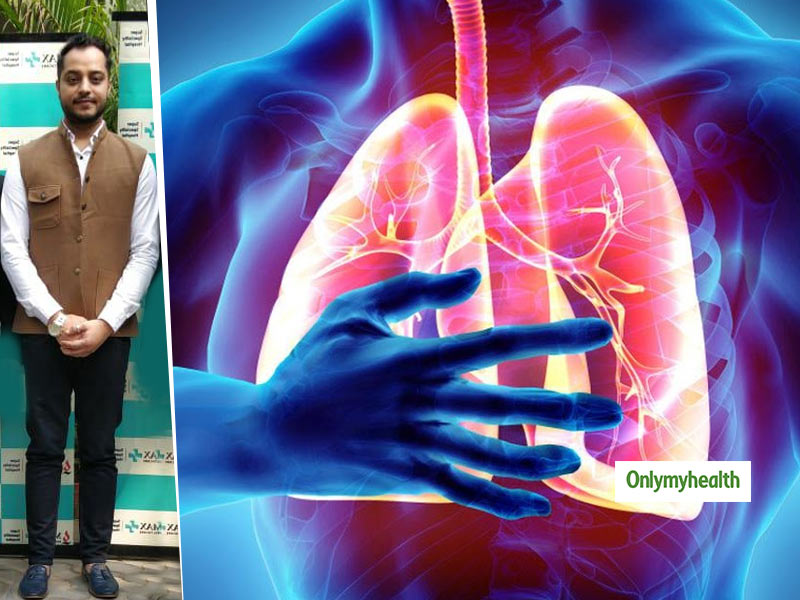
Incidence of deaths from cardiac-related ailments are high in India, and yearly pulmonary embolism cases range between 23 and 69 per 100,000 population. The rising incidences are majorly due to poor lifestyle choices, no exercise and unhealthy habits. There are many symptoms to identify the condition, but as the saying prevention is always better than cure, we must focus on exercising regularly and start adopting a healthy lifestyle. Also, it is recommended to take a break after every 2 hours of any continuous immobility. Physical activity is extremely important for muscle movement and blood flow. Driving for long hours without any halt or break and wearing tight attire – both can disrupt blood flow in the body.
Table of Content:-

A recent case was highlighted where 30-year-old Sourabh Sharma from Delhi was brought to Max Hospital, Shalimar Bagh with feeble BP and pulse. He, who had reached in a state of shock (pulseless and no recordable BP), got a new lease of life at Max Super Speciality Hospital, Shalimar Bagh. With a pulse of 10-12/minute and no BP. In the emergency, the Cardiology team administered CPR for 45 minutes continuously to revive him. It all happened when Sourabh was on his way to work when suddenly he suffered a blackout for 5 minutes. He was found unconscious on the office staircase by his colleagues. Sharma briefly regained consciousness after initial attempts by his colleagues but soon fell unconscious again. He was immediately rushed to nearby hospital after that.
Understanding Pulmonary Embolism
The patient was finally diagnosed with Pulmonary Embolism. Dr Naveen Bhamri, Director & HoD, Cardiology, Max Super Speciality Hospital, Shalimar Bagh, said, “Pulmonary Embolism is a potentially life-threatening condition and 50% of them present with cardiac arrest. So clinical diagnosis in a patient who turned with cardiac arrest is very important to differentiate the case of cardiac arrest from the other cardiac causes”. PE can happen because of immobility of lower limbs for a long duration, dehydration, post-surgery (in case the patient is advised bed rest for more than 24 hours), coagulation disorder, pregnancy and some genetic reasons.”
Deteriorating Condition
Since Saurabh’s condition was particularly critical, the team instantly administered a life-saving thrombolytic agent to perform “rapid” systemic thrombolysis. That was the only way to revive and arrest further deterioration to his failing heart without any further investigations like CT. Explaining the case in detail, Dr Naveen Bhamri, Director & HoD, Cardiology, Max Super Speciality Hospital, Shalimar Bagh, said, “When Sourabh was rushed into the emergency, he was at the brink of death with no BP or pulse recordable. His limbs had turned blue. Our only priority at that hour was to ensure that we do everything in our power to revive him. After initially successfully reviving his heart, he regained consciousness and a stabilised BP in 24 hours. But his urine output was NIL. Due to a low BP over a long period, his kidneys were unable to function properly. He was immediately put on Continuous Renal Replacement Therapy (CRRT) – a continuous 24-hour dialysis therapy.”
8-Hour Long Drive Was The Main Reason

It was later found that the reason why he suffered from a massive pulmonary embolism was because of an eight-hour-long drive! He was driving the car for such a long period, with no breaks during the journey. His leg was stiff and did not move for that period. Not only that, but he was also wearing a tight-fitted denim a day before the occurrence, which we believe can be a possible reason for a clot in his leg. Dr Yogesh Kumar Chhabra, Consultant, Nephrology, Max Super Speciality Hospital, Shalimar Bagh, added, “While it is widely known that BP has a direct impact on one’s heart health, eyes, breathing etc., a lot of people are still unaware of its negative implication on their kidneys. In this case, Sourabh’s kidneys were damaged due to long-standing low BP and needed immediate CRRT support. The patient recovered after five days and is doing well now. People need to be careful while indulging in activities where there is a limited movement for a long duration, as it might lead to much bigger consequences.”
Also Read: An Air Purifier Can Be A Collective Solution To Several Lung Diseases
The Patient Speaks...

Mr Sourabh Sharma said “I would like to take this moment to thank Dr Bhamri and his team. This was an extremely difficult time for my family and me, but they made sure that we were always in good hands. The entire team responsible for my treatment – from doctors to nurses, everyone was extremely thoughtful and caring. One message that I would like to share with everyone is that living a healthy and active life is important. This incident has taught me to be more mindful of my health – regular check-ups, avoiding alcohol and junk food, eating a healthy meal, etc. – all play an important role.”
Read more articles on Other Diseases
How we keep this article up to date:
We work with experts and keep a close eye on the latest in health and wellness. Whenever there is a new research or helpful information, we update our articles with accurate and useful advice.
Current Version